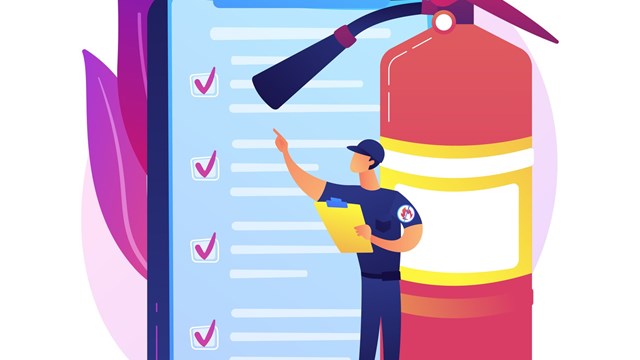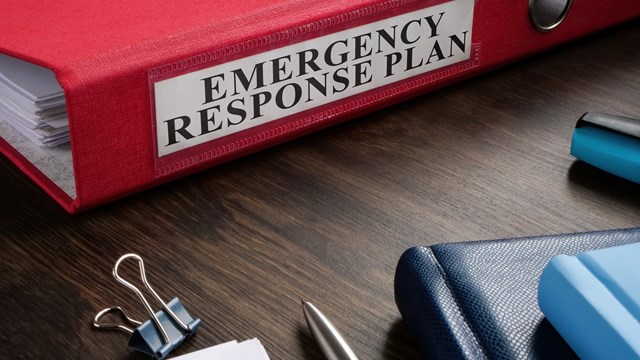Time was when New Yorkers rarely thought twice about disasters except when they watched movies such as “Airport,” “Earthquake,” “War of the Worlds” and “King Kong.”
Then came 9/11, and people suddenly had to take the threat of terrorism seriously. But that wasn’t the end of it. Two years later came the blackout, bringing back memories of the blackouts of 1965 and 1977 for older New Yorkers. This past fall, New Yorkers watching their TVs saw monstrous hurricanes hit Louisiana, Texas, and Florida. They began to wonder, could this happen here, too?
Maybe. But while there’s not much you can do in the event of a surprise terror attack, most disasters happen with at least some advance warning, and there are plans in place to mitigate the impact on local residents. And this is true not only for sudden, dramatic disasters like hurricanes, but also for less photogenic but no less deadly problems like prolonged heat waves or sub-zero temperatures, as well.
Help is Here
All sorts of agencies and organizations exist in our region to help ordinary people contend with extraordinary circumstances, from the city’s Office of Emergency Management (OEM) to neighborhood volunteer teams to the Red Cross. And there are many ways that your co-op or condo board or management can help out.
To begin with, disaster planning is not new. “Before 9/11, it was much the same as today. We had a robust emergency response system, with a lot of interagency planning,” says Andrew Troisi, a spokesman for the OEM.
Although many people think that the OEM itself was created after 9/11, it was actually formed in the 1990s under the Giuliani administration – some people may remember that, ironically, its original headquarters was in 7 World Trade Center. It was originally an agency within the mayor’s office, but it became an independent agency in 2002 in the wake of 9/11.
“One thing that does come out of unfortunate tragedies is the opportunity to learn from them. For example, after 2003, Mayor [Michael R.] Bloomberg convened a blackout task force,” says Troisi. One recommendation that came out of that task force—key points of which have now been implemented—is battery backup of traffic lights at busy intersections. Now, those lights can continue to operate even when power goes down.
Another way the city has responded to these tragedies is to get more citizens involved, through education and preparedness efforts. Many of these people were already involved in neighborhood safety efforts prior to 9/11. In Queens for example, the Glendale Civilian Observation Patrol, active since 1976, transformed itself after 9/11 into a Community Emergency Response Team (CERT) program. The OEM’s goal is to have one CERT in every community board in the city, although this has proved easier in some neighborhoods than others. We’ll learn more about CERT teams later in this article.
Natural Disasters
With all the recent coverage of hurricanes, tsunamis, and earthquakes in the media, New Yorkers have recently begun to contemplate the possibility of a natural disaster befalling our city in addition to the man-made ones we’ve been worrying about since 9/11. Both prospects are terrifying, but with natural disasters, there’s at least the small comfort of knowing that such events usually occur with some warning. While it may be very hard to predict terrorist attacks with much accuracy, there’s lots of information out there about when, if, and how a natural disaster might affect New York City—and what to do about it.
Although hurricanes are most common in the tropics, one need only consider the Great Hurricane of 1938, which produced storm tides of 14 to 18 feet across most of the Long Island and Connecticut coast, to remember that we New Yorkers are vulnerable too.
“New York City is a highest-risk city for damage for a hurricane,” says Mike Murphy, a spokesperson for City Councilman Peter Vallone Jr., D-Queens, who chairs the council’s Public Safety Committee. “Not because of the [strength of the] hurricane itself, but because of the damage one would do here. Various studies point to a major hurricane hitting New York City every 80 years.”
Bruce Swiren, regional earthquake/ hurricane program manager for the Federal Emergency Management Agency (FEMA)’s Region 2, says, “Basically, the city’s at risk from a direct hit from a category 2, 3 or 4 hurricane. A category 3 hurricane would flood a good part of the subway system and the Lincoln, Holland and Brooklyn-Battery Tunnels. In addition, the city has tall structures where the wind effects would be up to 40 or 50 percent higher than they would be at ground level.”
Fortunately, authorities today have the ability to map hurricanes and other storms. The OEM’s website, www.nyc.gov /html/oem, shows areas of low, moderate and highest risk in the event of hurricane-related storm surges. Among the highest-risk areas are parts of Lower Manhattan (much of which was built on landfill) and low-lying coastal areas such as Brooklyn’s Coney Island and Bath Beach, the Rockaways and other parts of southern Queens, and the perimeter of Staten Island.
The city also has evacuation plans in the event of such a storm. According to Swiren, these include moving people to shelters (often school buildings), and using buses to move as many people as possible away from danger. “The MTA would be shutting down subways, tunnels and bridges in advance of a gale-force wind. Thank God we don’t have the probability of the Gulf Coast or Florida,” he says.
And what about earthquakes? We have actually had a number of (mostly) minor earthquakes here in New York—although in 1884, an earthquake measuring 5.2 on the Richter scale was felt from Virginia to Maine. According to Dan O’Brien, project manager for earthquakes for the New York State Emergency Management Office, “We’re a moderate hazard in the metropolitan area, but at high risk.” That means that there may be less of a chance that an earthquake would occur here, but that if one did occur, it would cause more damage here than in lightly-populated areas.
The city, he said, has included seismic provisions in its building code from 1995 on, but obviously, most buildings were constructed long before then. To minimize any damages, he added, co-op and condo boards and managers should secure rooftop structures such as air-conditioning towers and water tanks. Residents should rearrange their apartments so that, for example, “a big heavy lamp that can fall right down on top of you” is not next to your bed.
In addition to the OEM site, the state Emergency Management Office’s website (www.nysemo.state.ny.us) is a good place to look for this and other disaster-related information.
Protecting Those Most at Risk
Hurricanes and earthquakes are unusual, but just about every resident of our city can remember long heat waves, cold snaps or droughts that posed a threat to everyone, but to certain groups of people in particular. Extreme weather conditions can be especially dangerous for the elderly, people with chronic illnesses, and other “at risk” populations.
Just this past summer, when temperatures hit the mid-90s and stayed there for days on end, the city opened “cooling centers” in senior citizens’ centers, day care facilities, schools, houses of worship—just about anywhere people could come in, sit in an air-conditioned environment and drink some cold water. The OEM has tips on its website for dealing with severe heat, such as wearing light clothing, drinking plenty of fluids, and so forth. This may all sound obvious, but according to the OEM, some elderly inadvertently “overdress” or wear dark clothing in very hot weather, thus putting themselves at risk for heat exhaustion or heatstroke.
The elderly and ill are doubly at risk during storms and hurricanes, says Troisi. “As part of its coastal storm plan,” he says, “every assisted living facility or hospital has its own evacuation plans. If we think that they’re not ready, we will come and assist them.”
Helping Out
Co-op and condo boards wishing to get more actively involved in planning for emergencies can contact the Red Cross. The group offers presentations on emergency planning and crisis management to any community group that’s interested. In addition to basic CPR and first-aid courses, the Red Cross’ “Ready New York” presentation is a full two-hour program on disaster planning; “Prepare New York” is a 45-minute version of the same program. The Red Cross can also help people know what to do in case of blackouts, terrorist events, fires, water-related problems, severe weather and other emergencies.
The Ready New York Home Preparedness Guide deals with life-and-death issues such as carbon monoxide safety tips, what to do in the event of an earthquake, what to do if you receive a suspicious package, what to do if you are trapped by debris, and so on. The guide also includes practical everyday advice, such as “take your time while shoveling snow or pushing a car.”
According to Annie Lazar of the American Red Cross of Greater New York, another simple bit of advice that could prove to be vital in an emergency is to be sure and lock your door after hearing a fire alarm—and hold onto the key. “Many people just grab their dog and run,” she says, but if they leave the door open, it leaves their apartment vulnerable to theft or further property damage.
Getting CERTified
Co-op and condo residents who want to take their involvement to the next level can join a CERT team. To be a member of one of these teams, which are affiliated with local community boards, applicants must take part in an intensive 11-week training course on emergency preparedness. The teams coordinate with local police and fire departments. When they’re not helping out in emergencies, they attend street fairs and similar events, spreading the word about preparedness.
Scott Caruthers, from the CERT-1-NYC team in Bay Ridge and Bensonhurst, Brooklyn says, “We have found missing children, given medical attention to people who are hurt, responded to cardiac events, car accidents, and blackouts, and even assisted police in directing traffic.”
Speaking about his Glendale CERT in Queens, Frank Kotnik says, “Last year, when there was a big fire that affected five houses, we closed the streets so that FDNY vehicles could get through. During the blackout, we got flares from the precinct and set them out in intersections, then started directing traffic.” And after 9/11, the group, which wasn’t a CERT yet but was already a civilian observation patrol, patrolled the area in cooperation with the 104th Precinct, trying to prevent looting and other “crimes of opportunity.”
All Together Now
Among the city’s other program options, the Empowerment Institute (www.empowermentinstitute.net) sponsors its own program, developed with OEM, called All Together Now. Many of its components are similar to those of other programs we’ve mentioned, such as preparing an evacuation kit, preparing a first aid kit, and preparing for very high temperatures.
One part of All Together Now, designed for apartment buildings, seeks to involve building managers, and stresses such measures as emergency generators, and providing storeplaces for emergency food and water. Eve Baer of the institute says the organization is training residents of Co-op City in the Bronx, and is starting teams in Rochdale Village, Castle Village and Peter Cooper Village in Manhattan.
Speaking about basic preparedness, Caruthers of CERT 1-NYC says, “There are 55,000 fires in New York City every year. There are choking deaths. We’re not talking about Osama bin Laden here—we’re talking about what could happen next Tuesday.”
When it comes to being prepared, you don’t have to be a boy scout, but you must remember to stay alert, use common sense and follow the directives of city agencies and emergency personnel. That way we all can stay safe and sound in any emergency. n
Ranaan Geberer is a freelance writer living in New York City.







Leave a Comment